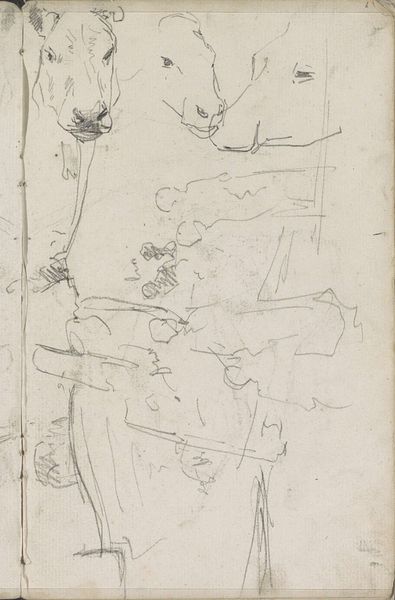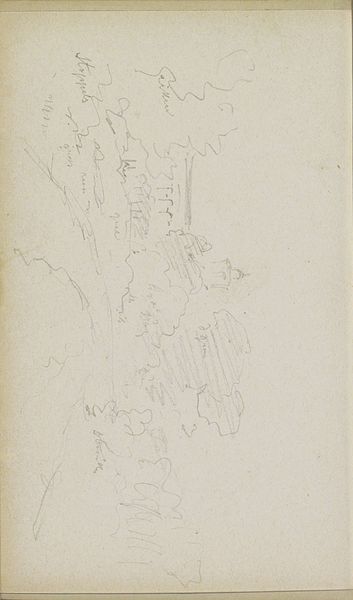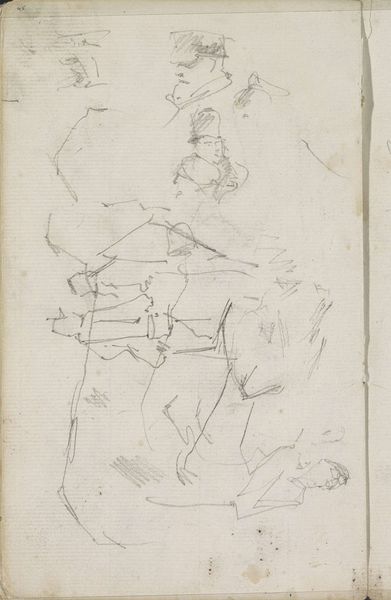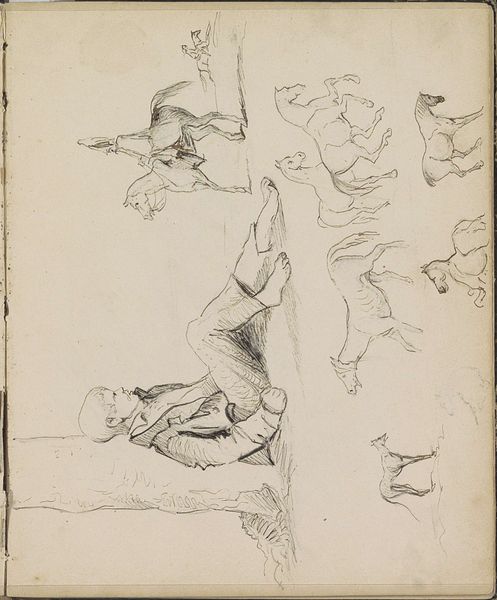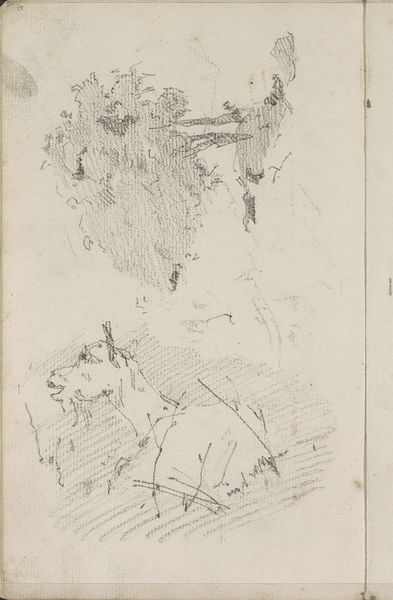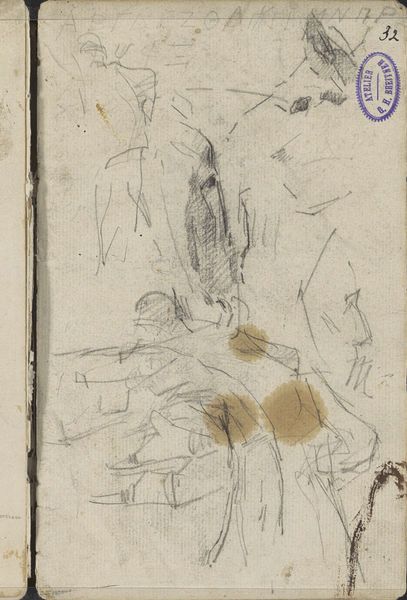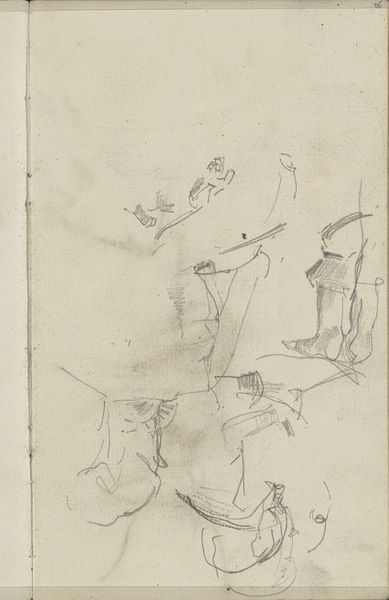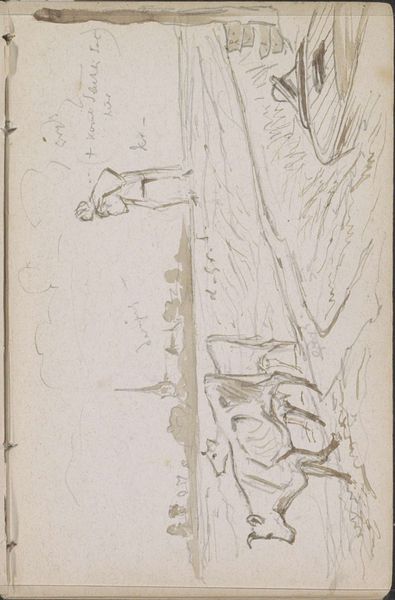
drawing, paper, pencil
#
drawing
#
impressionism
#
pencil sketch
#
landscape
#
figuration
#
paper
#
pencil
#
horse
#
genre-painting
#
realism
Copyright: Rijks Museum: Open Domain
Curator: Before us is "Studieblad met paarden en soldaten," a page of studies by George Hendrik Breitner, made between 1880 and 1882. The medium is pencil on paper. What are your initial thoughts? Editor: It feels incredibly immediate, almost frantic. You can practically see Breitner's hand moving across the paper, capturing fleeting moments. The pencil work itself is so raw, you really feel the pressure he exerted and see how it’s translated into varying line weight and tone. Curator: Breitner was very interested in documenting modern urban life, particularly the military presence in Amsterdam. This drawing exemplifies his impressionistic style. His rapid sketches remind me of how social documentary movements captured daily struggles to encourage change through exposure. Editor: Exactly. The speed of the lines and the ephemeral quality makes me think about labor and observation. The figures are quickly rendered, capturing movement more than static forms. I’m intrigued by the sheer number of figures jostling on the same sheet. It shows such focus. Do we know about his practice, or how he may have worked up images like these later? Curator: Breitner often used sketches like this as preparatory studies for larger paintings and prints. It was common during that time as rapid notes that capture poses, light, and composition before committing to larger works. Editor: This points to the real art of selection involved. The material fact of these figures being soldiers in a larger imperial system invites a whole host of associations. By placing such focus on sketching as the foundational labor, do you think Breitner highlights a change of status for drawing? Curator: His urban genre paintings caused a scandal and fascination in equal measure; these working drawings reflect those social undercurrents, absolutely. We’re seeing Realism taking root across media as art responds to changing societies, and also new production methods. Editor: Yes, and that makes it more compelling to understand how a society processes the image making around it. Curator: Well, it certainly brings into relief the processes of image making and art production at that pivotal historical moment. Thanks for sharing that with me! Editor: Thank you! These pencil lines spark endless avenues of analysis.
Comments
No comments
Be the first to comment and join the conversation on the ultimate creative platform.
